When you’re building or fixing up a home, picking between drywall and plaster can be a tough call. Both have strong points, but one may suit your needs better than the other. I’ve worked with both for years and helped many homeowners weigh the pros and cons.
This article is based on what I’ve seen on real job sites, not just what books or brochures say. We’ll look at cost, ease of installation, strength, and how each one holds up over time. I’ll share practical tips and honest insight to help you feel sure about your choice.
You won’t find vague advice or confusing terms here, just clear facts backed by real results. By the time you finish reading, you’ll know which wall material fits your home, your schedule, and your budget. Let’s break it all down so you can make the best call for your space.
What Are Drywall and Plaster?
Before we compare these materials, let’s understand what each one is. This knowledge will help you make a more intelligent choice.
Drywall Overview
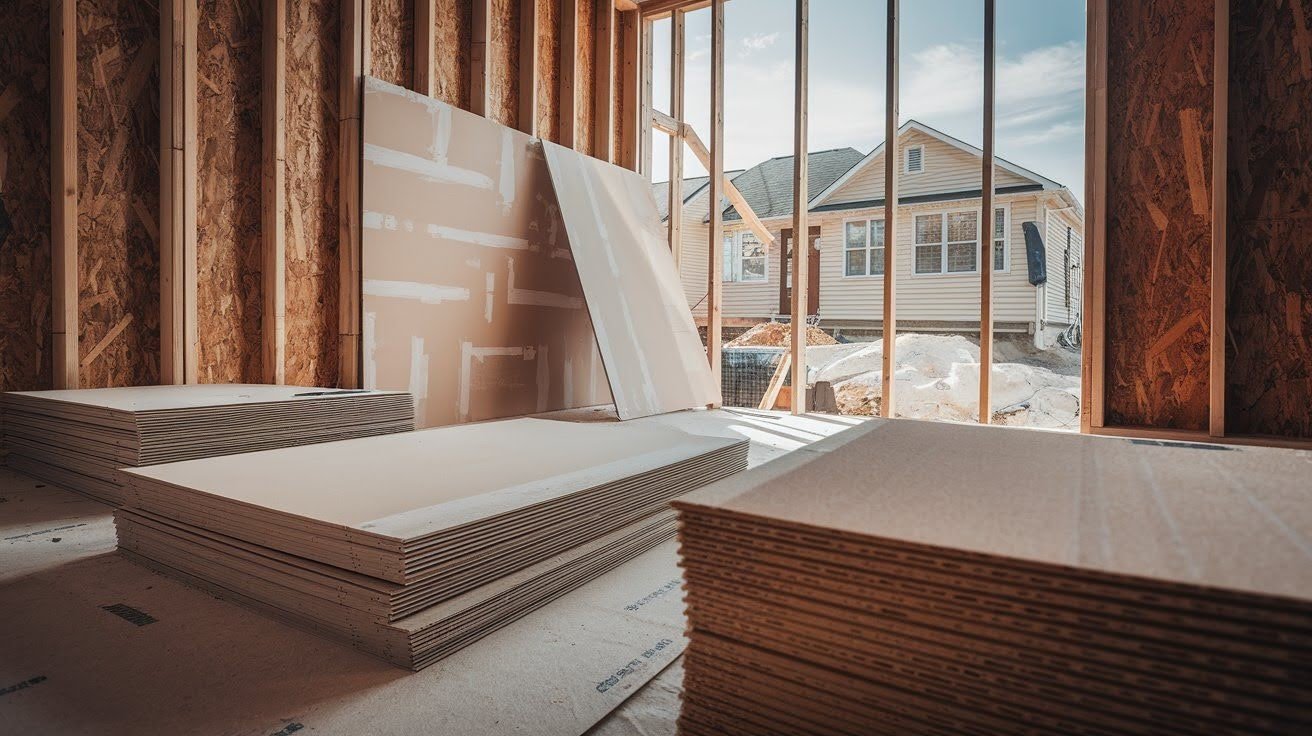
Drywall is gypsum plaster sandwiched between two layers of paper. Simple. You might know it by other names like gypsum board, Sheetrock, or wallboard.
Here’s what makes drywall special: it comes in pre-manufactured sheets. Standard sizes are 4×8 feet, 4×10 feet, and 4×12 feet. You can buy it at any home improvement store.
But here’s the interesting part. Drywall only became popular in the 1950s and 1960s. Before that? Most homes used plaster.
The reason for this timing was simple. After World War II, America needed to build homes fast. Drywall was the answer.
Plaster Overview
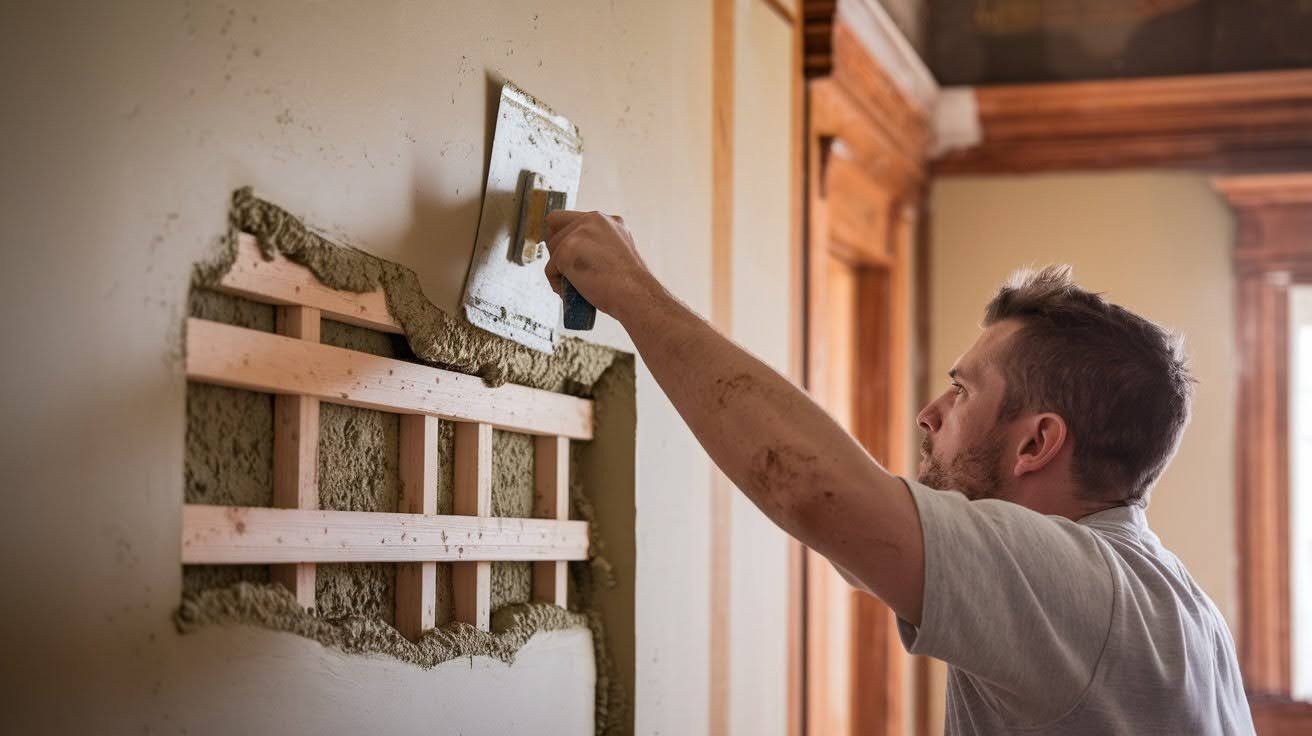
Plaster is a mixture of cement, sand, water, and minerals. It’s applied wet in multiple layers. This creates a hard, smooth surface when it dries.
Here’s where it gets technical. Plaster needs something called lath to stick to. This can be wood strips, metal mesh, or plasterboard.
The application process requires skilled contractors. You can’t just slap it on the wall. Each coat must dry properly before the next one goes on.
Most homes built before 1940 used plaster. It was the standard back then.
Installation and Construction Methods
Now let’s talk about how these materials go up on your walls. The installation process is where you’ll see the most significant differences.
Drywall Installation Process
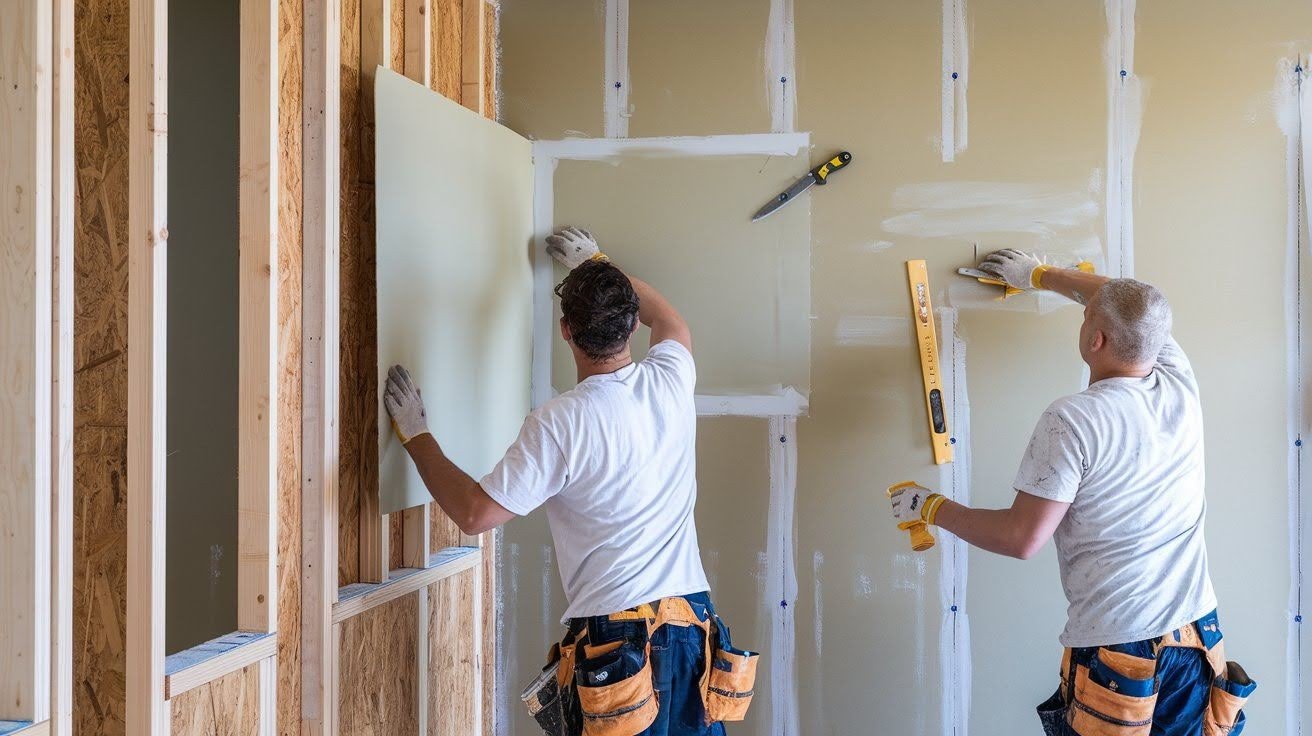
Installing drywall is straightforward. You cut the sheets to size and screw them directly to your wall studs. No complicated prep work needed.
Here’s the basic process: Pre-cut sheets get secured with screws every 12 inches. Then comes the finishing work. You apply a joint compound in three separate layers – first coat, second coat, then final coat.
Between each coat, you sand the joints smooth. This is where most DIYers mess up. Poor sanding shows through the paint every time. The speed is impressive.
A skilled crew can finish an entire house in just a few days. Compare that to plaster, which takes weeks. But there’s a catch. Drywall requires standard 16-inch stud spacing.
If your studs are spaced differently, you’ll need extra blocking or furring strips.
Plaster Installation Process
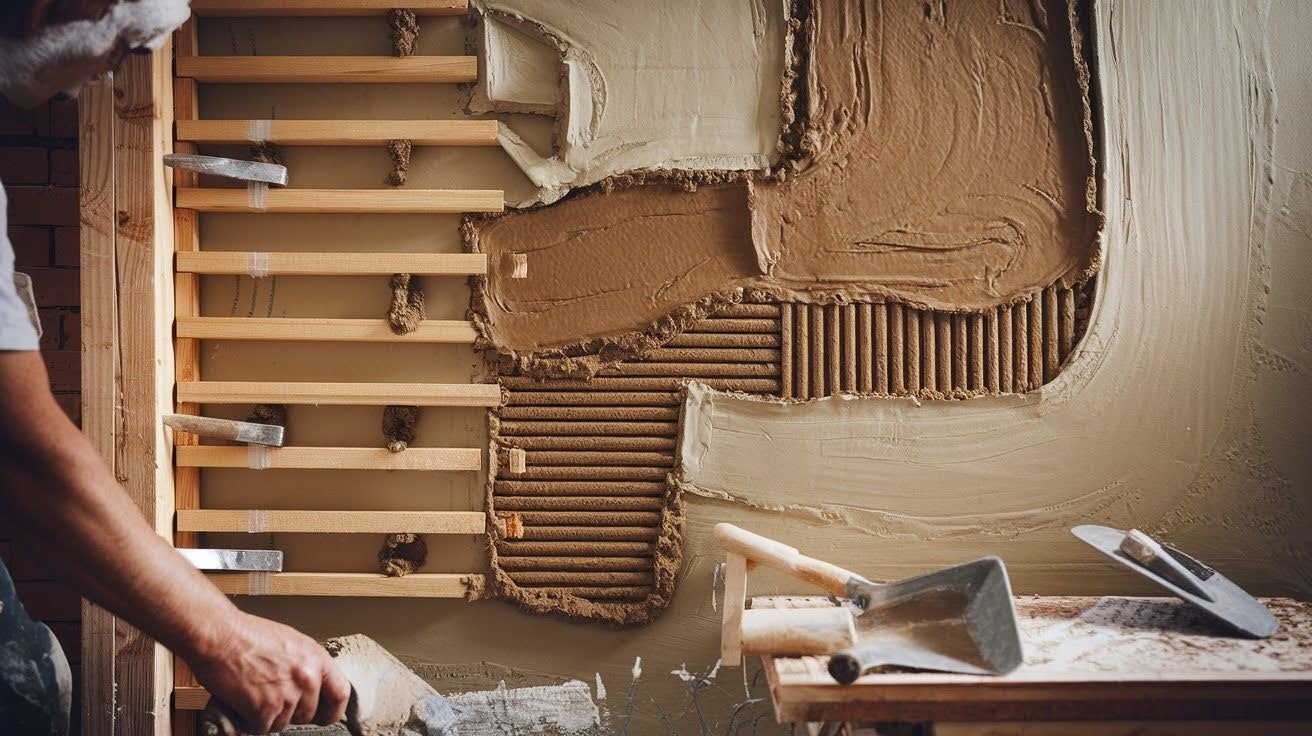
Plaster installation is an art form. First, contractors install the lath system. This gives the plaster something to grip onto.
Then comes the real work. Three coats go on over several weeks. Each coat must dry completely before the next one.
Here’s what makes plaster special. It adapts to any stud spacing. Got an old house with weird framing? No problem.
Plaster works around irregular spacing that would give drywall installers headaches. You cannot do this yourself. Professional installation is required.
The timing, mixing, and application technique take years to master. The patience required is significant. Each coat needs days to cure properly.
Performance Comparison
Let’s get into the fundamental differences between these materials. Performance is where your choice matters.
Durability and Longevity
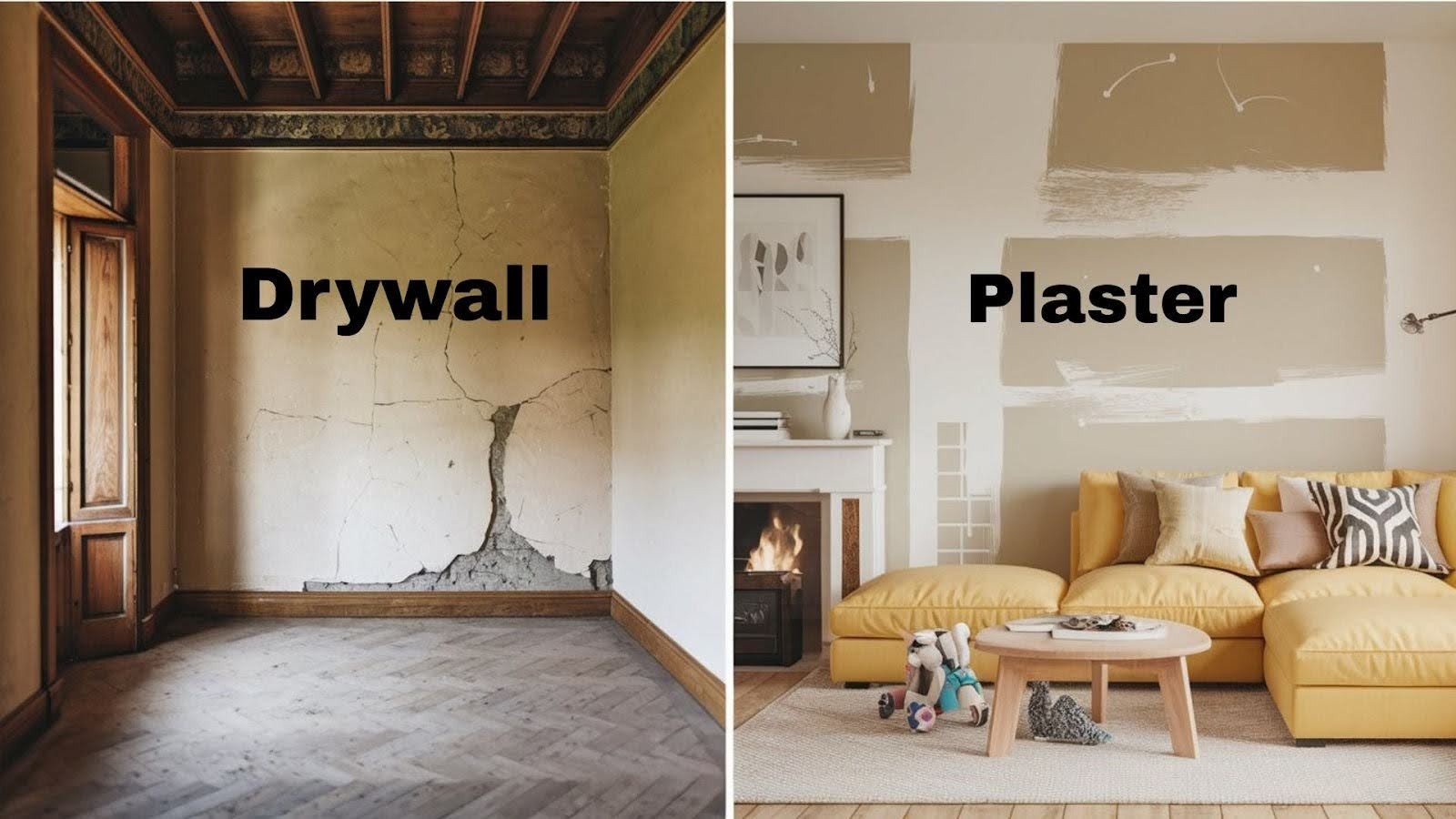
Plaster wins the durability contest hands down. I’ve seen plaster walls that are 100 years old and still solid. They can last for decades without needing replacement.
Drywall doesn’t have the same staying power. It’s more susceptible to damage from daily life. Kids running toy cars into walls, doorknobs hitting the surface, and even humidity changes can cause problems.
But here’s the twist. Plaster has one major weakness – it’s brittle. When your house settles over time, plaster develops cracks. These cracks are hard to fix correctly.
For impact resistance, plaster takes more abuse before showing damage. Drywall dents and holes easily. You’ve probably seen this in your own home.
Soundproofing Capabilities
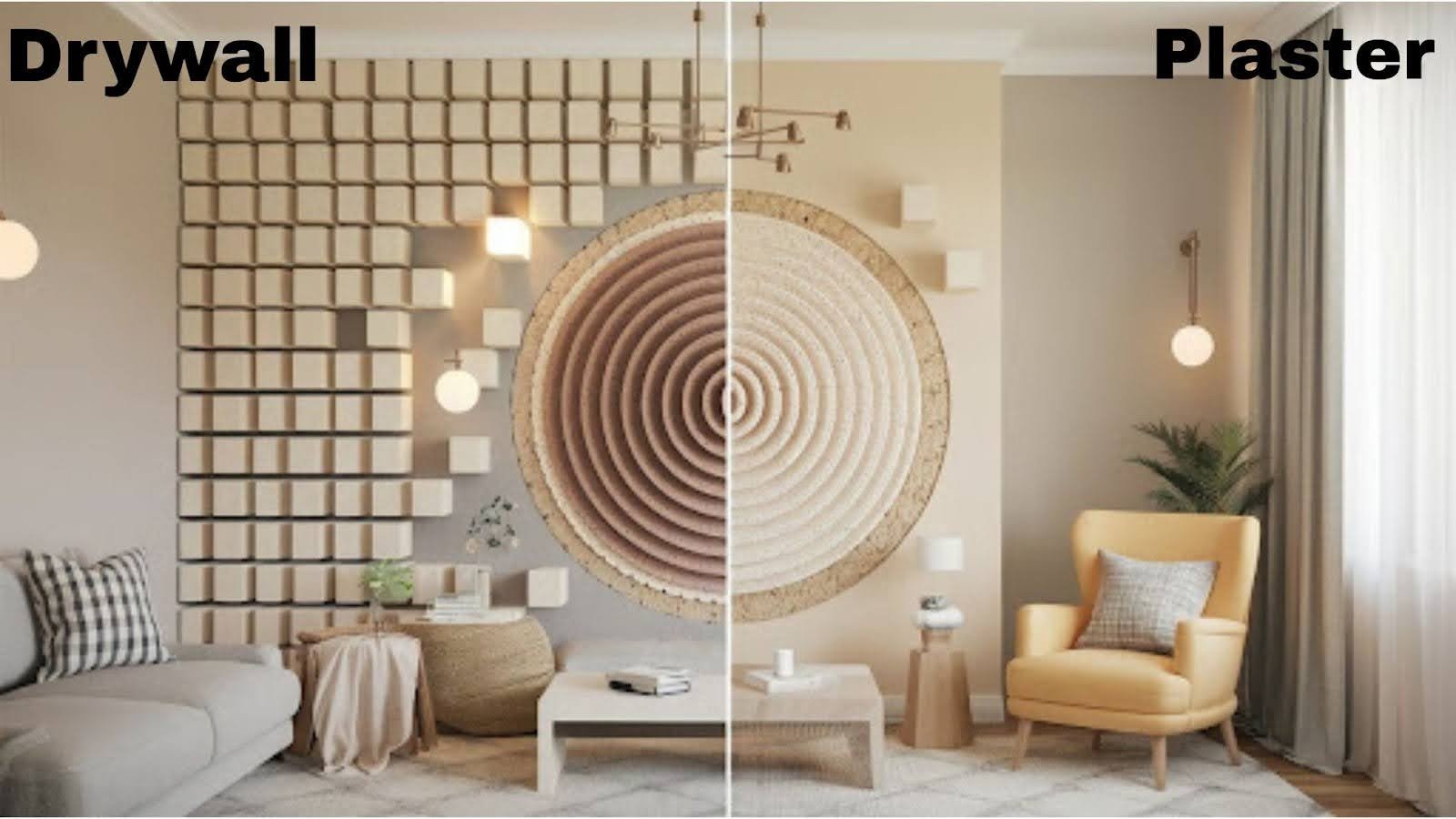
This is where plaster shines. It has a 52% higher sound transmission class rating than drywall. That’s a huge difference you can hear.
The dense material blocks sound waves effectively. Your conversations stay private. Music from upstairs doesn’t travel downstairs as easily.
Drywall struggles with sound control. The thin panels have space behind them. Sound waves pass through more easily.
If noise control matters to you, plaster is the clear winner. Think about bedrooms, home offices, or media rooms where quiet matters.
Insulation and Energy Efficiency
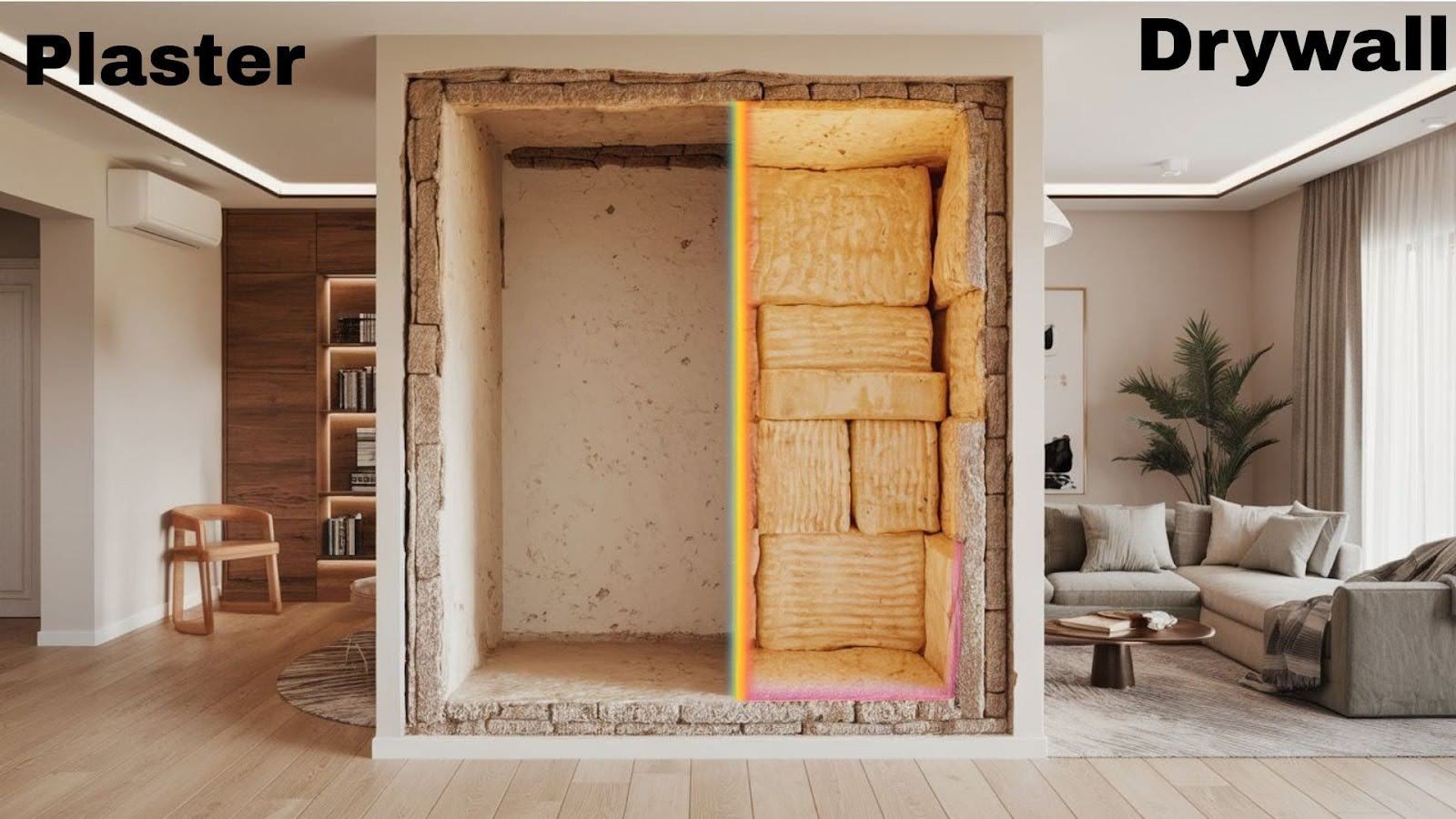
Plaster has approximately twice the R-value of drywall. That means better insulation right out of the box. Your heating and cooling bills will thank you.
But drywall fights back. It easily accommodates additional insulation materials. You can pack the wall cavities full of high-performance insulation.
When you add quality insulation, drywall wins the energy efficiency battle. The combination of drywall plus sound insulation beats plaster alone.
Climate matters too. In extreme temperatures, the insulation advantage becomes more important.
Fire Resistance
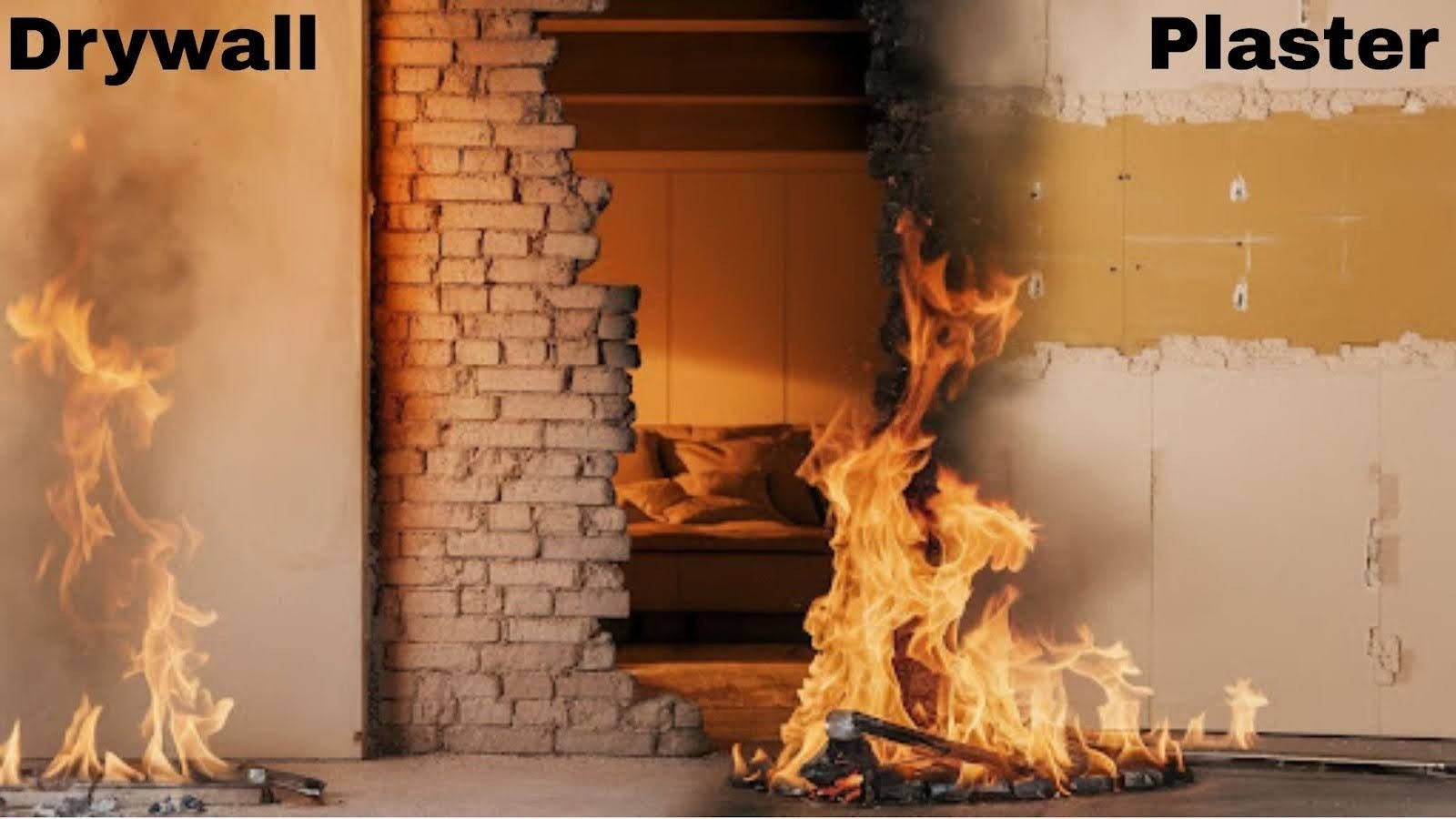
Plaster is the fire resistance champion. It can withstand temperatures up to 1200°F for two hours. That’s serious protection for your family.
Drywall provides fire resistance but loses structural integrity faster. When exposed to high heat, it fails sooner than plaster. Both materials contain gypsum, which gives them fire-resistant qualities.
But plaster’s thickness and density make it a better choice for fire safety. Think about this carefully if fire safety is a top priority in your home.
Cost Analysis
Money talks when you’re choosing wall materials. Let’s break down the real costs so you can budget properly.
Installation Costs
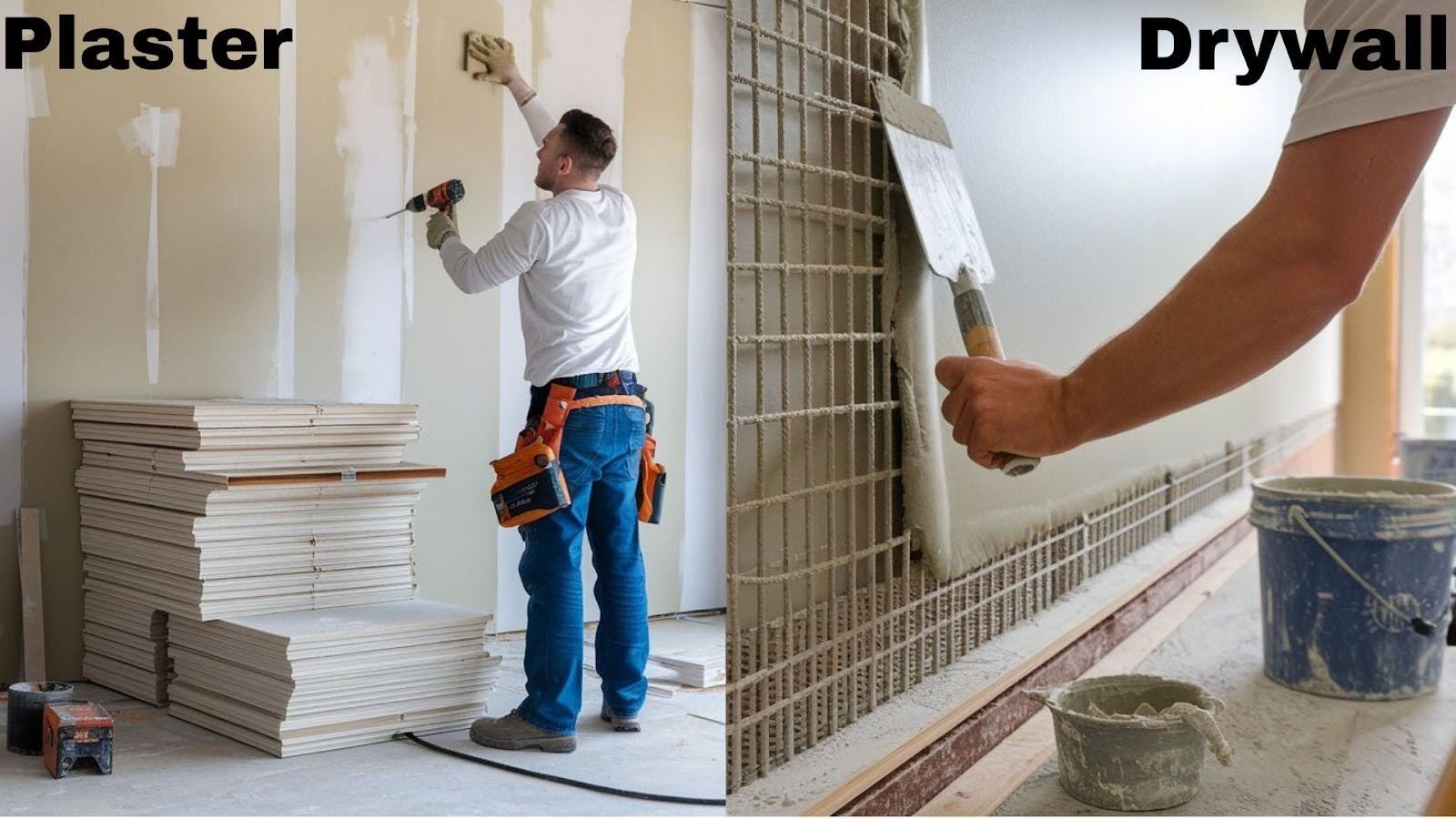
Drywall costs $1 to $3 per square foot to install. That’s affordable for most homeowners. A typical room might cost $500 to $1,500 for materials and labor.
Plaster costs $2 to $10 per square foot. That’s a vast range, but even the low-end costs more than drywall. The same room could cost $1,000 to $5,000.
Here’s what drives the difference. Labor makes up 35% to 60% of drywall costs. For plaster, labor accounts for 70% to 90% of your total bill.
Think about it this way. With drywall, you’re mostly paying for materials. With plaster, you’re paying for skilled craftwork.
Long-term Investment Considerations
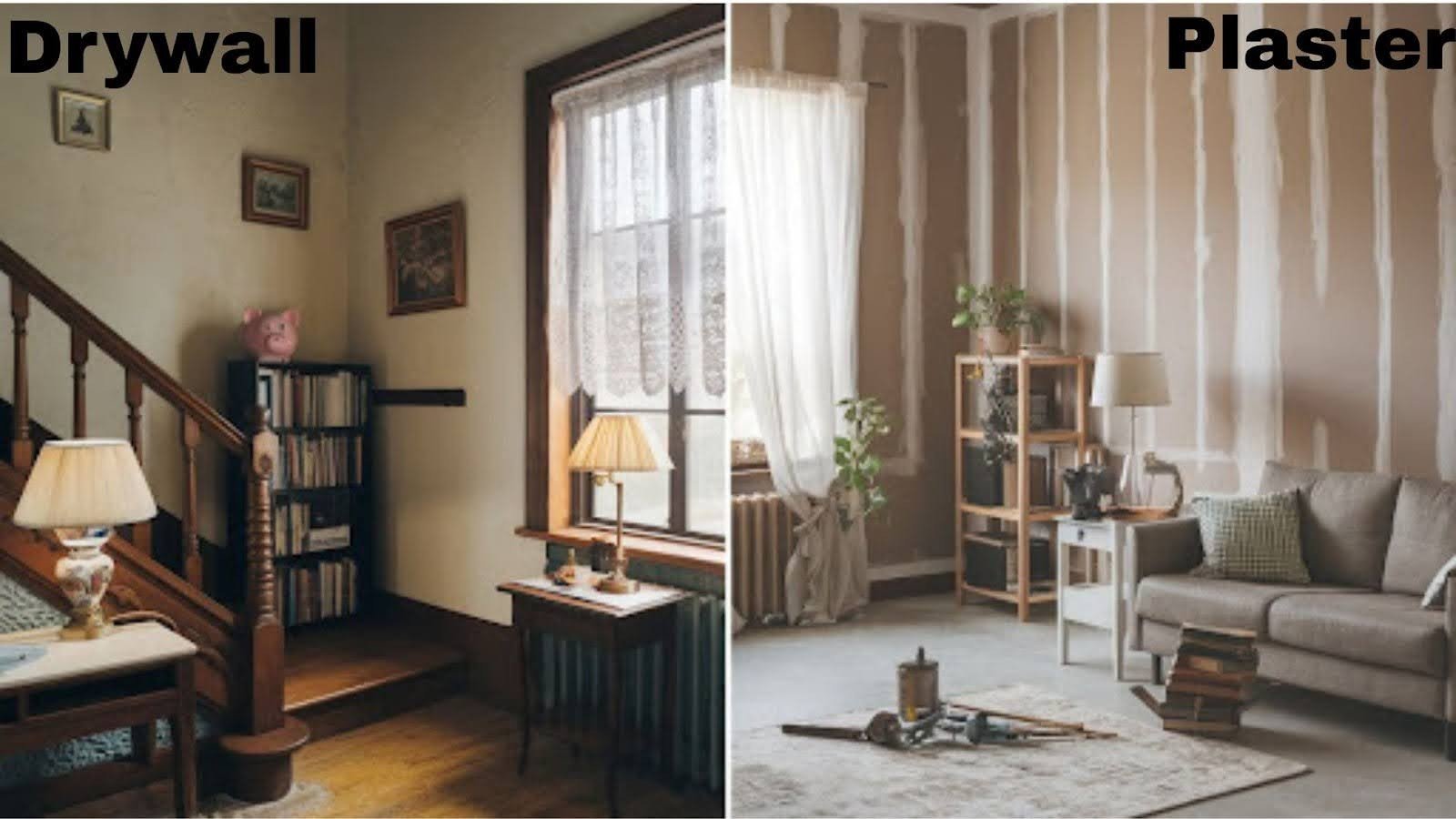
Plaster costs more upfront but lasts much longer. You might never need to replace it. That’s worth considering if you plan to stay in your home for decades.
Drywall costs less initially but needs more maintenance over time. Repairs, touch-ups, patching, and eventual replacement all cost money. The DIY factor matters too.
You can install drywall yourself and save thousands. Plaster requires professionals every time. Your budget and timeline will determine which option makes more financial sense for your situation.
Aesthetic and Design Considerations
The look of your walls affects your entire home’s feel. Let’s see how these materials stack up for style and function.
Visual Appeal and Finish Options
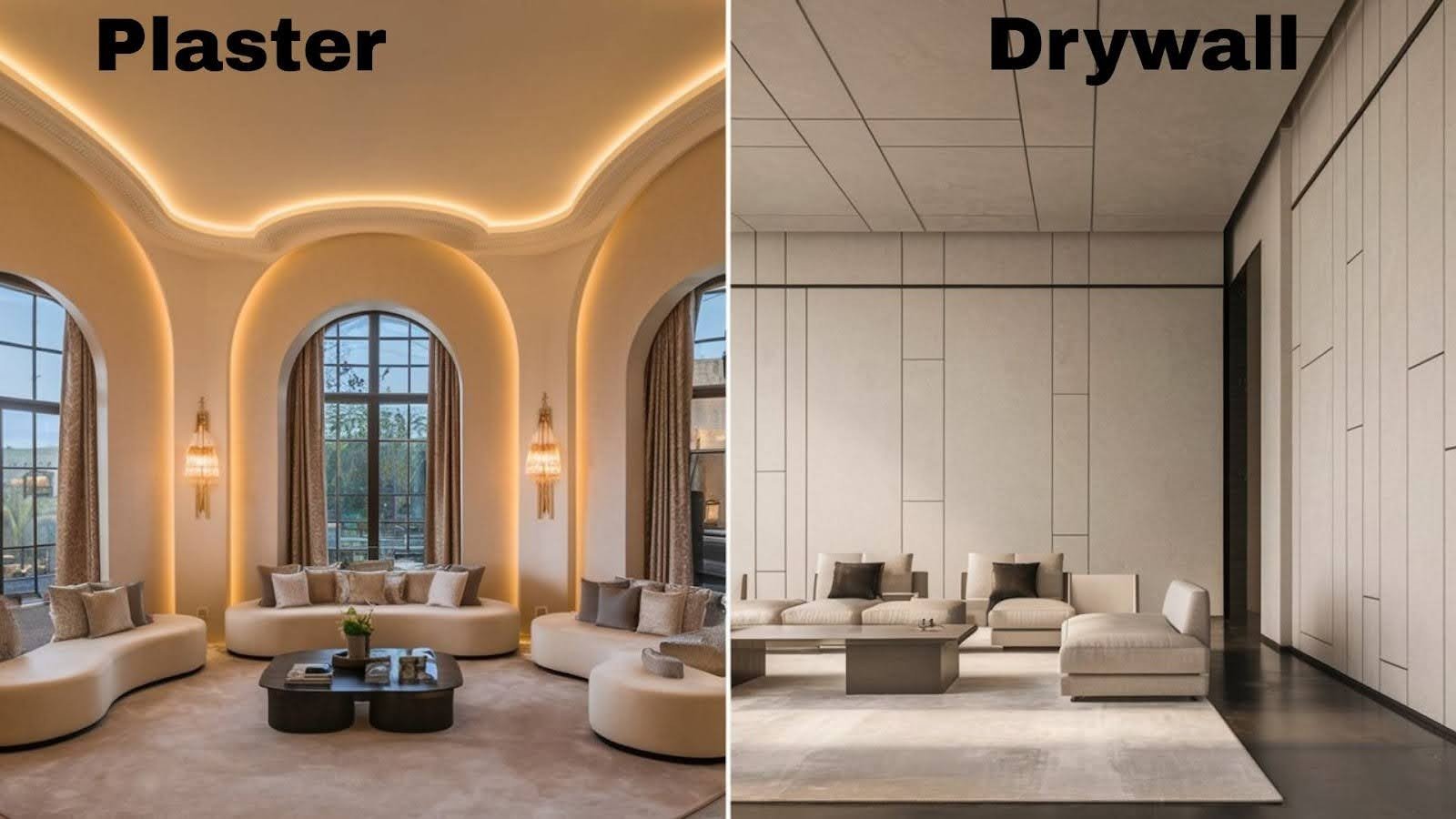
Plaster creates a more polished, sophisticated appearance. The smooth, seamless finish looks expensive. It’s perfect for formal dining rooms or living spaces where you want to impress guests.
Plaster shines with curved walls. It flows smoothly around corners and creates beautiful architectural details. Try doing that with drywall – it’s much harder.
Drywall offers a more minimalist aesthetic. You get clean, straight lines and various texture options. Orange peel, knockdown, and smooth finishes are all possible.
Design flexibility varies between materials. Plaster adapts to any shape you want. Drywall works best with standard rectangular rooms and straight walls.
Hanging Items and Decor

Drywall makes hanging pictures easy. Standard hardware works perfectly. Picture hangers, screws, and nails go in without drama.
Plaster requires special consideration because it’s so hard. You’ll need masonry screws instead of regular ones. Nails often bend or break when you try to hammer them in.
Weight matters more with plaster. Heavy mirrors or artwork need proper anchors. The good news? Once properly mounted, items stay put.
Plan your wall hangings carefully if you choose plaster. The extra effort pays off with rock-solid mounting.
Maintenance and Repair Requirements
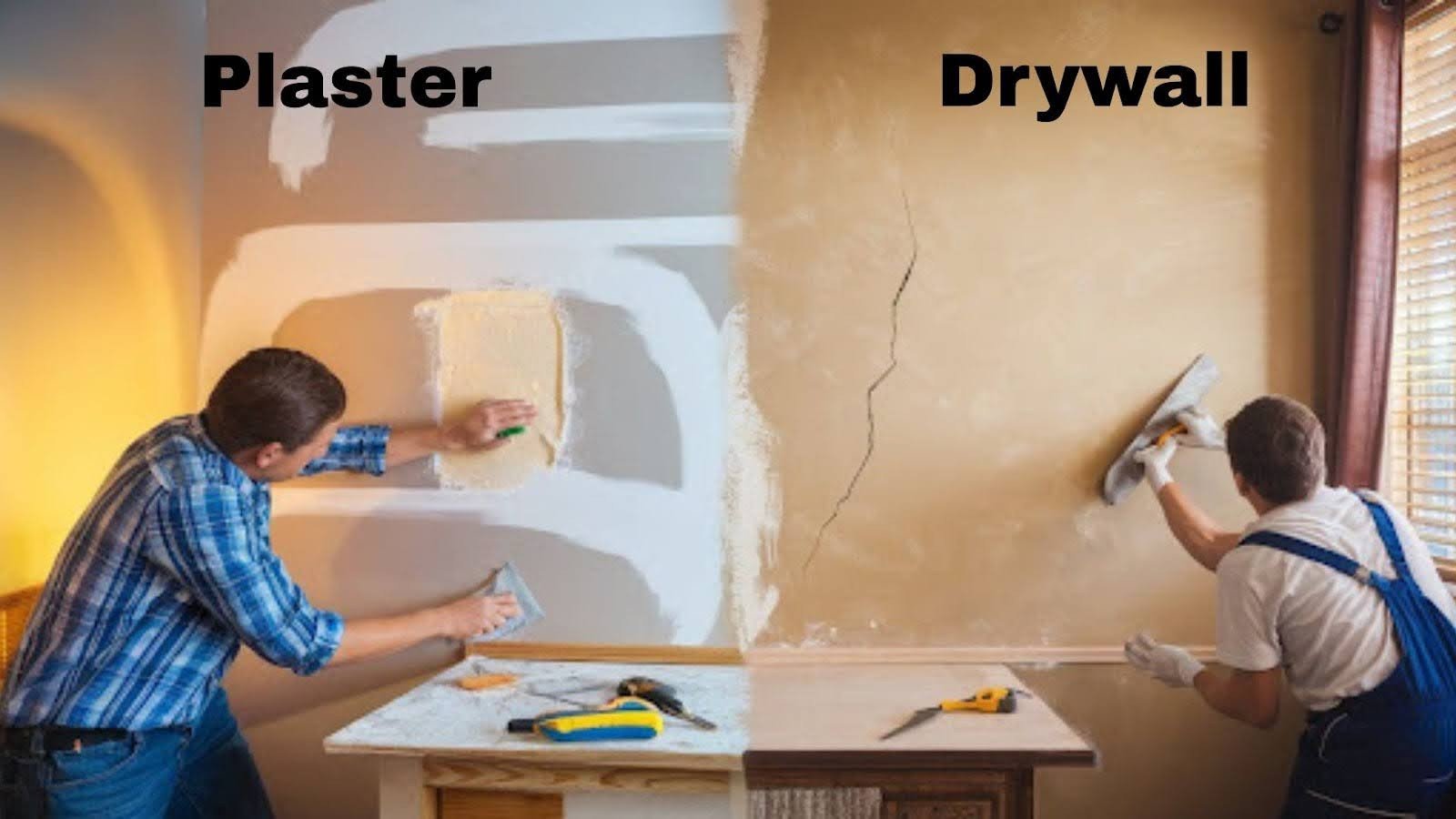
Every wall gets damaged eventually. How easy is it to fix problems when they happen? Drywall repairs are DIY-friendly. You can buy patch kits at any hardware store.
Small holes take 30 minutes to fix. Larger damage means cutting out a section and installing a new piece. The process is straightforward. Cut, fit, screw in place, then apply joint compound.
Sand smooth and paint. Most homeowners can handle this. Plaster repairs depend on the size of the damage. Small cracks and holes? You can fix those yourself.
Mix some plaster compound, fill the gap, and smooth it out. Significant damage is different. Large cracks or chunks missing require professional help. The repair must match the existing texture perfectly.
Cost implications add up over time. Drywall repairs cost $50 to $200 for materials. Plaster repairs can cost $200 to $800 when you need professionals.
Think about your comfort level with home repairs. If you like fixing things yourself, drywall gives you that freedom. Plaster limits your options when severe damage occurs.
Decision-Making Guide
Now you know the facts. Let me help you make the right choice for your specific situation.
Choose Drywall When:
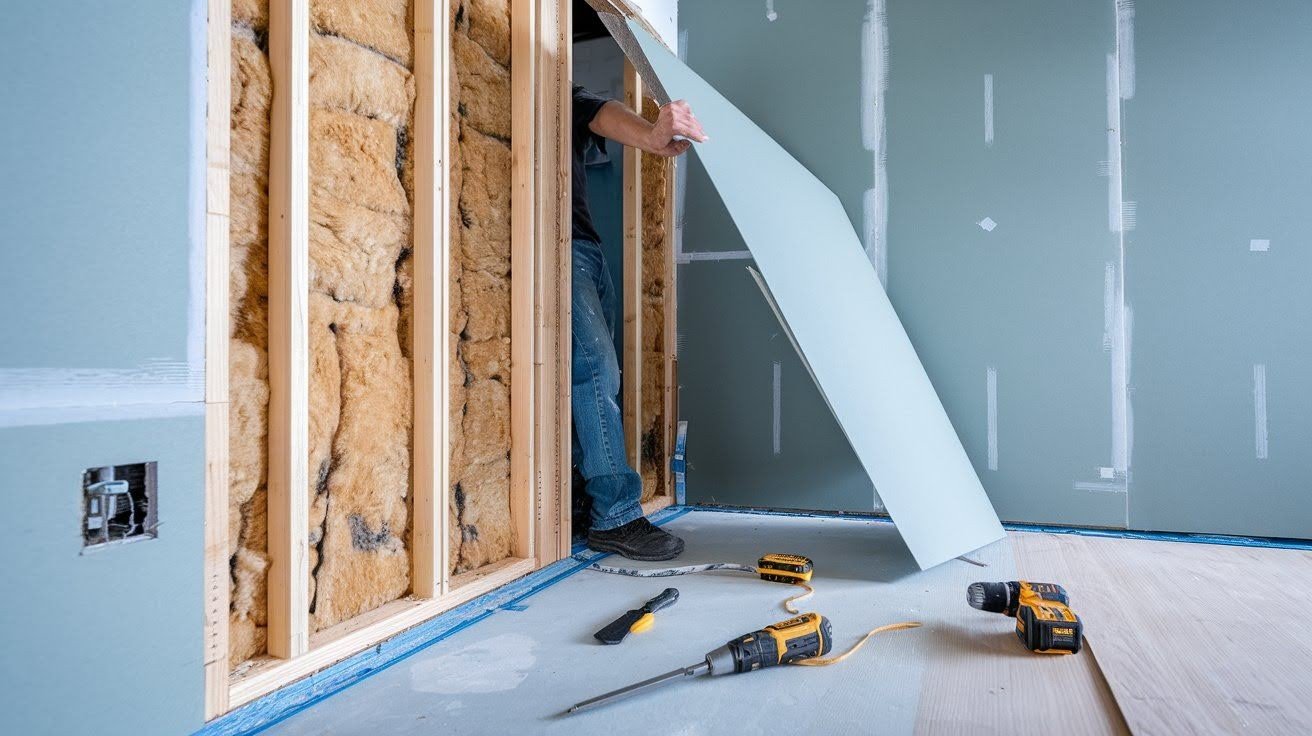
Time is your biggest concern. You need walls finished in days, not weeks. Drywall gets you there fast.
Budget constraints matter too. If you’re watching every dollar, drywall saves serious money upfront. The material costs less, and installation is cheaper.
You want superior insulation. Drywall lets you pack wall cavities with high-performance insulation materials. Energy savings add up over time.
DIY installation appeals to you. You can save thousands doing it yourself. Weekend warriors love drywall projects.
Future modifications are likely. Planning to add electrical outlets or move walls later? Drywall makes changes much easier.
Choose Plaster When:

Long-term durability matters most. You want walls that last decades without replacement. Plaster delivers that staying power.
Superior soundproofing is required. Quiet bedrooms and home offices need plaster’s sound-blocking ability. The difference is noticeable.
You’re building curved walls or architectural details. Plaster flows smoothly around any shape. It creates beautiful custom features.
Low-maintenance appeals to you. Once installed properly, plaster needs minimal upkeep for years. Fire safety is a significant concern. Plaster withstands extreme temperatures better than drywall. That extra protection could save lives.
Project-Specific Considerations
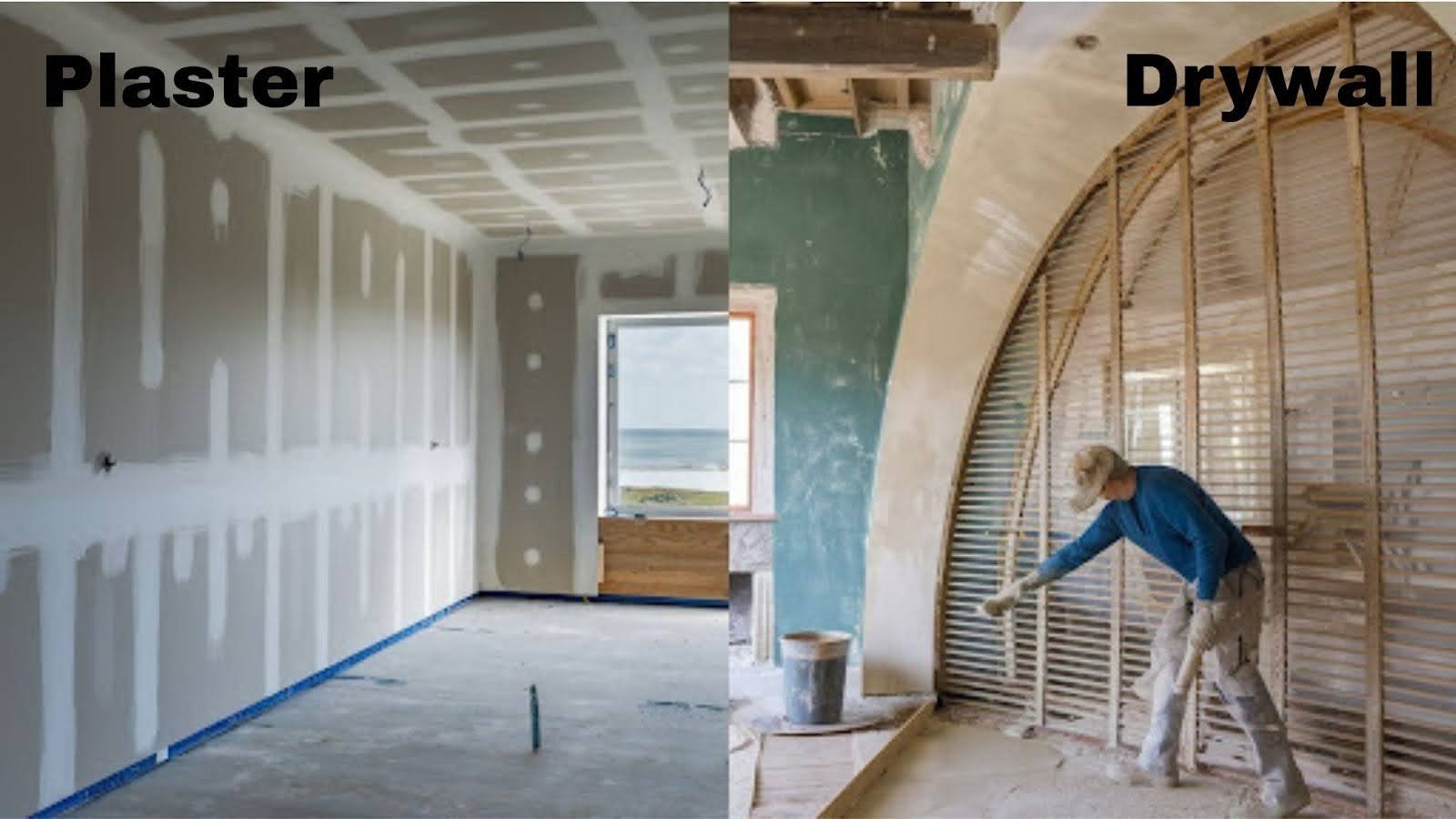
New construction favors drywall. Everything goes up faster and cheaper. Renovations need plaster to match the existing walls.
Climate affects your choice. Extreme temperatures make insulation more critical. Humid areas favor plaster’s moisture resistance.
Check your building codes. Some areas require specific materials for safety reasons. Fire ratings matter in certain buildings.
Think about plans. Will you remodel again? Drywall makes changes easier down the road.
Conclusion
The drywall vs plaster choice comes down to your priorities and budget. Drywall wins for speed, cost, and DIY flexibility. Plaster takes the lead for durability, sound control, and fire safety.
You now have the facts to make a confident decision. Consider your timeline, budget, and long-term goals. Both materials can create beautiful, functional walls when used in the right situation.
Remember this simple rule: Choose drywall for practical projects where speed and cost matter most. Pick plaster when you want premium performance and plan to stay put for decades.
Got questions about your specific project? Drop a comment below. I’d love to help you work through the details and make the best choice for your home.
Frequently Asked Questions
Which is cheaper, drywall or plaster?
Drywall costs $1-$3 per square foot while plaster costs $2-$10 per square foot. Drywall is significantly cheaper for both materials and installation.
How long does drywall vs plaster installation take?
Drywall installation takes a few days for an entire house. Plaster installation takes several weeks, including drying time between coats.
Which is more durable, drywall or plaster?
Plaster is more durable and can last decades without replacement. Drywall is less durable and more susceptible to damage from daily use.
Can I install drywall or plaster myself?
Drywall is DIY-friendly with basic tools and skills. Plaster requires professional installation due to specialized techniques and timing requirements.
Which provides better soundproofing?
Plaster offers superior soundproofing with 52% higher sound transmission class rating than drywall due to its dense material composition.

